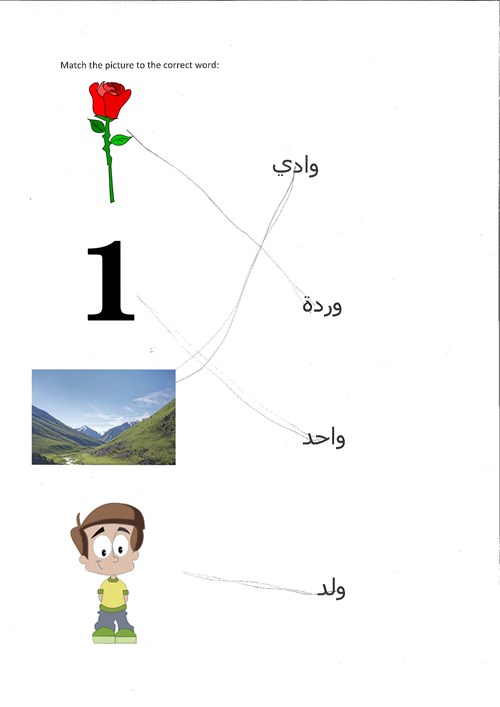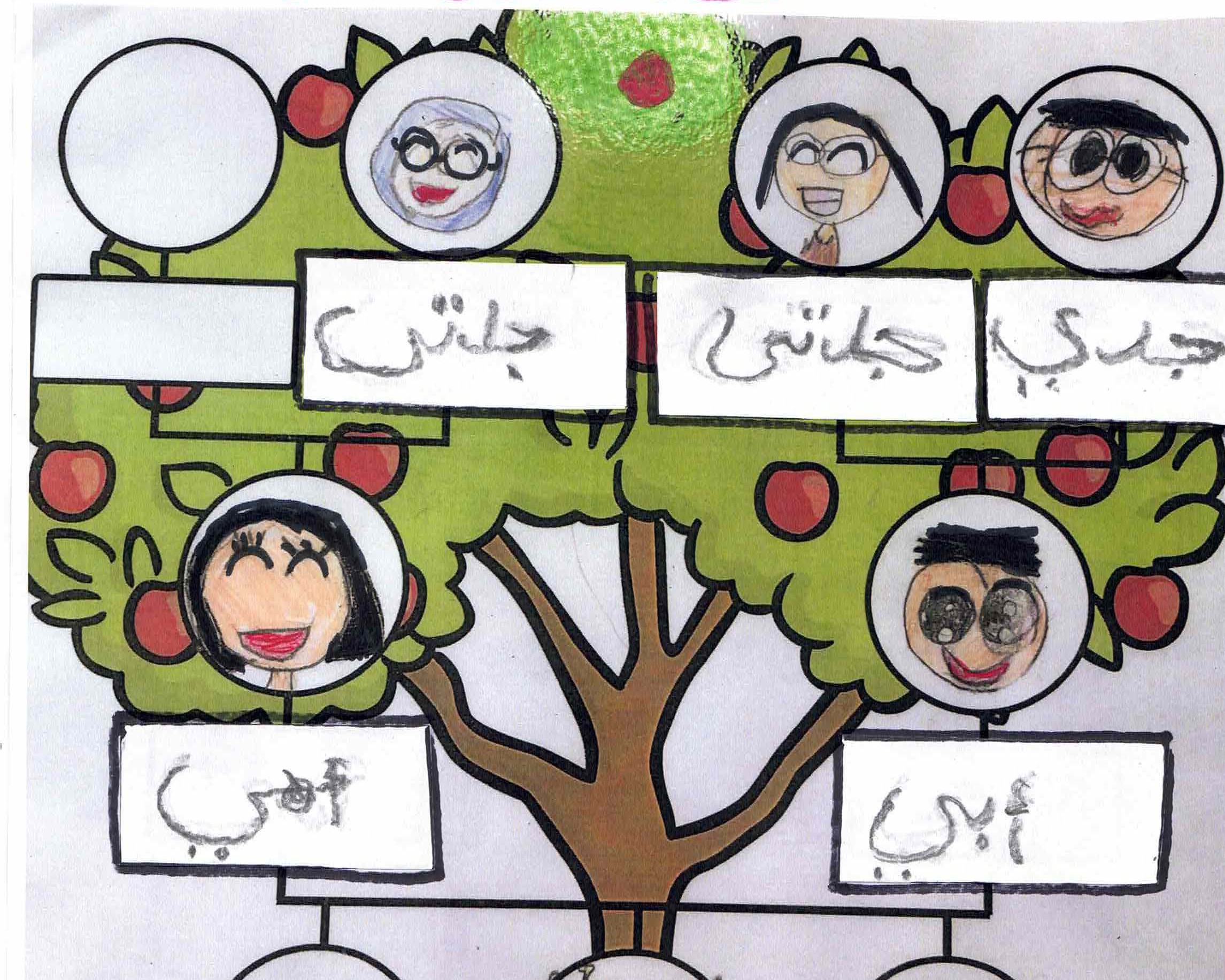Languages: Arabic - Satisfactory - Foundation to Year 2
Portfolio summary
This portfolio of student work shows that the student can interact with the teacher and peers (WS5, WS6, WS7) to exchange information about themselves (WS3), their family (WS2) and friends and initiate interactions by asking and responding to questions (WS1, WS5, WS6). The student uses repetitive language when participating in shared activities and transactions and responding to classroom instructions (WS1, WS4, WS6). When speaking, the student uses the sounds of the Arabic language (WS1, WS3, WS4, WS5, WS6, WS7). The student locates information about people, places and objects in simple texts (WS1, WS5, WS6), and shares information in different formats, using illustrations and gestures to support meaning (WS6). The student makes simple statements about favourite elements in response to imaginative experiences, and creates own representations of imagined characters and events, using illustrations, familiar language and non-verbal forms of expression. The student identifies specific parts of speech, such as nouns (WS1), verbs and adjectives, in spoken and written texts (WS7), and uses familiar words and phrases and sentence patterns in simple texts (WS3). The student recognises questions and commands (WS1, WS6, WS7), and uses vocabulary (WS1, WS5, WS7) and simple sentences to communicate information about themselves (WS3), their family (WS2) and classroom, applying basic rules of word order and gender (WS2, WS6, WS7). The student translates frequently used words and simple phrases using visual cues, and creates word lists, labels and captions in both Arabic and English for their immediate environment (WS7). The student describes their roles as members of particular groups, and shares their feelings and ways of behaving as they use Arabic at home and in the classroom (WS2). The student identifies letters of the Arabic alphabet (WS1) and joins some letters to form simple words (WS2, WS4, WS7). The student identifies features of familiar texts. The student distinguishes between the language spoken by different Arabic speakers in different situations, such as at home with family or at school with the teacher (WS2, WS6). The student names some of the many languages that are spoken in Australia, including Arabic (WS2), and provides examples of simple words in Arabic that have been borrowed from English and vice versa (WS7). The student identifies how the ways people use language reflect where and how they live and what is important to them (WS2).






